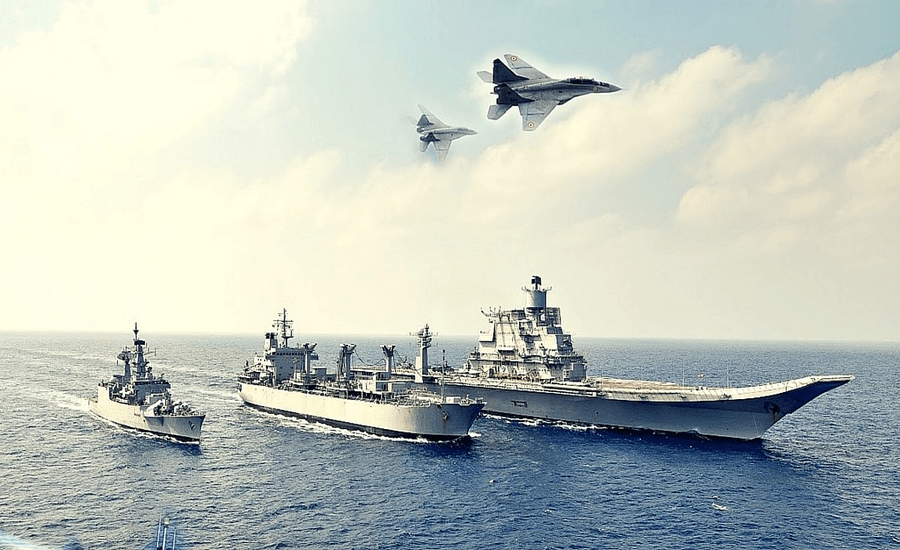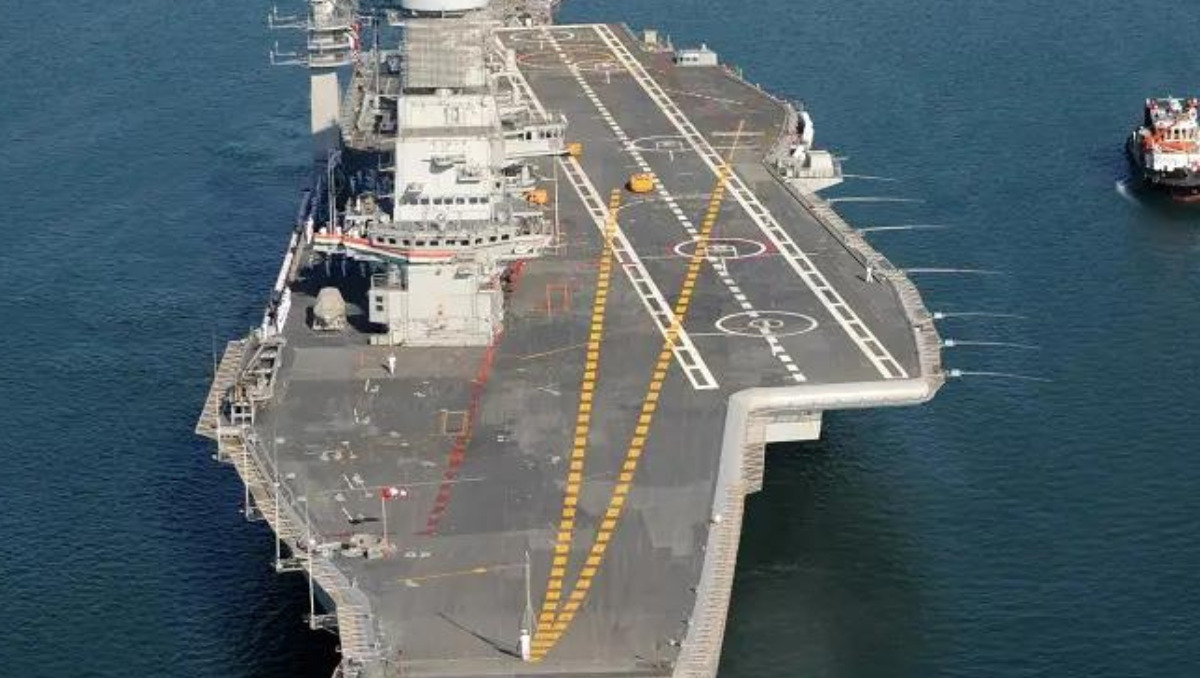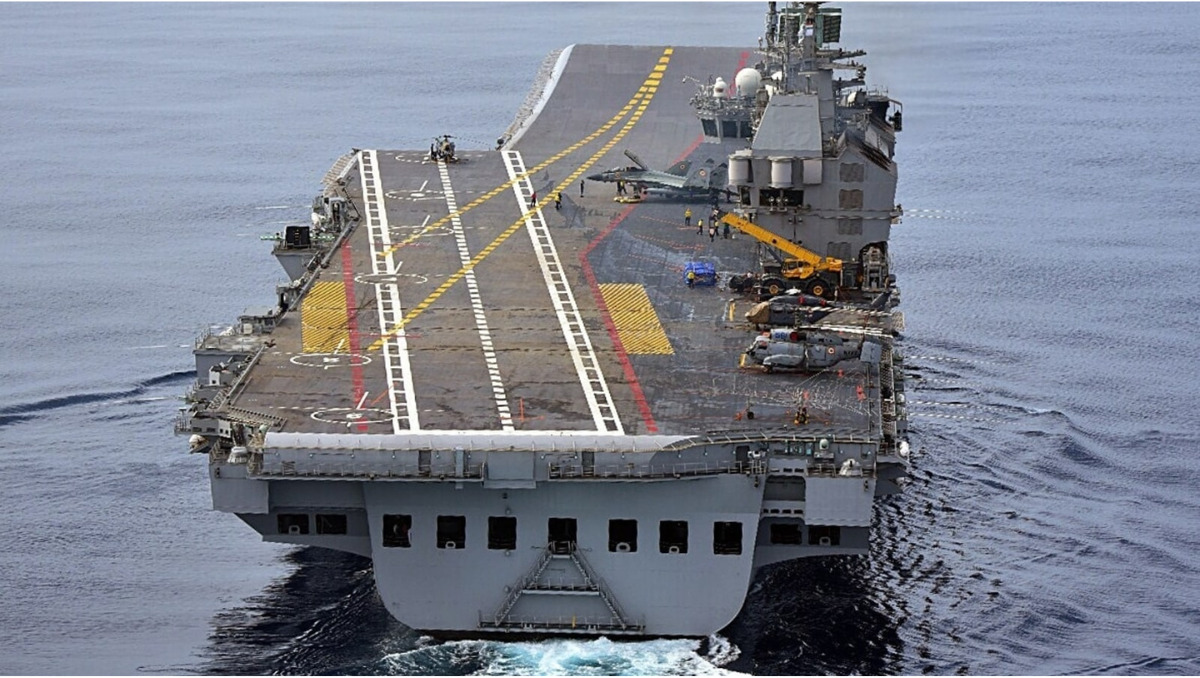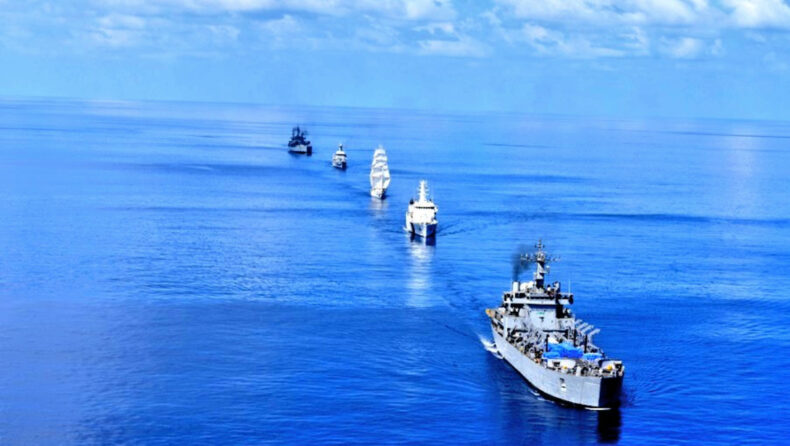Indian Navy backing up the Indo-Pacific and the maritime security with operational practices, tackling the challenges with dynamic approaches.

INS Vikrant and INS Vikramaditya are leading the twin carrier battle group operations. The operational exercise is undertaken by the naval fleet, aircraft carrier, and multiple escort vessels. The following maritime exercise is also backed by several aircraft to boost maritime security and the country’s security and dominance over the Indian Ocean and further muster security and assurance in the Indo-Pacific region. The Indian Navy is further planning to have a practice drill with the Quad countries in the month of August. Indian navy as well as diplomacy are also working together to edify the country’s relations by accelerating diplomatic ties as well as the country’s maritime security over the Indo-Pacific region.
Maritime developments
maritime practises and ongoing operations in the Arabian Sea with the Carrier Battle Group (CBG), which consists of a naval fleet, aircraft carriers, and multiple escort vessels. The group is being led by INS Vikrant and INS Vikramaditya. These twin CBGs have been practising in the Abraina Sea since the start of this month. They do have floating sovereign airfields to launch aircraft such as MiG-29K fighter jets, Kamov, Chetak, MH-60R, and Sea King.

Counting the benefits of present maritime practise, we can enlist the efficiency of the fleet, which is important in fostering the national interest in the Indian Ocean and the Indo-Pacific region. The following twin carrier battle group (CBG) improves security and assures the region. The following fleet has a powerful testament supply and can lead to India’s maritime superiority over the region. The fleet can be positioned anywhere in the world due to its flexibility to be placed in any region of the world and to further counterattack. The following has a great response to the threat as well as showing the superiority of air operations.
Indo-Pacific and security
Observing the current global trends and dynamics, it is necessary to protect the country’s borders and international boundaries. I’m the following: it is paramount to pay enough heed to strengthening the maritime borders and interests. Focusing on the Indo-Pacific region, it is one of the most important routes for the world, not only for its trade dynamics but also for its territorial benefits. Countries like China have hampered the security of other nations in this particular region. It is turning out to be a dire need in the present hour to strengthen the maritime borders.
Following the same pattern, India is trying its best to secure its interests not only in the Indian Ocean, which deserves India’s essential dominance, but also in the Indo-Pacific region so as not to get hampered by China and its engulfing diplomacy towards other countries.
India and others have plans for maritime security
Strengthening maritime security requires both developed infrastructure and a trained navy and fleet to deal with such circumstances. Following the same plan, the Indian Navy has planned to participate in QUAD’s Malabar exercise off the coast of Sydney in August 2024. Accompanied by other participating countries like Japan, the United States of America, and Australia’s navy fleets.

Apart from these, there are several other strategies that are being adopted to strengthen maritime security. One of them is investing in ports and bases in the ASEAN countries, which will not only provide a great stretch of maritime region but will also strengthen ties with those countries. Further seeking support and investment from oil-rich countries in the Middle East to invest in ports in Indian Ocean littoral states This can further assist the country in supporting the maritime security of the Southeast Asian region.













